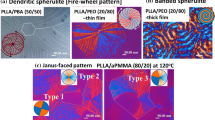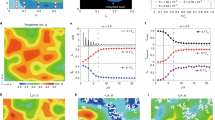Abstract
THE rate of growth of a crystal face depends in a general way on the supersaturation of the solution in which it grows, but this dependence has not received much quantitative study. The possibility of obtaining unique values has been in doubt, for microscopic crystals showed a great variability in the growth-rates of faces of the same form in the same solution1. Seemingly, the microstructure of the face itself outweighed other factors. It was anticipated that on larger faces differences in the distribution of minute surface imperfections would be relatively less important, so that supersaturation could then become the rate-controlling factor; but rate data for specified faces growing in solution under steady conditions have not been available.
This is a preview of subscription content, access via your institution
Access options
Subscribe to this journal
Receive 51 print issues and online access
$199.00 per year
only $3.90 per issue
Buy this article
- Purchase on Springer Link
- Instant access to full article PDF
Prices may be subject to local taxes which are calculated during checkout
Similar content being viewed by others
References
Bunn, C. W., Discuss. Farad. Soc., No. 5, 132 (1949).
Egli, P. H., and Zerfoss, S., Discuss. Farad. Soc., No. 5, 61 (1949).
Yamamoto, T., Sci. Papers Inst. Physic. Chem. Res. (Tokyo), 35, 228 (1939).
Author information
Authors and Affiliations
Rights and permissions
About this article
Cite this article
BOOTH, A., BUCKLEY, H. Growth-rates of Single Crystals of Ethylene Diamine d-Tartrate: Flawed Growth and its Inhibition by Boric Acid. Nature 169, 367–368 (1952). https://doi.org/10.1038/169367a0
Issue Date:
DOI: https://doi.org/10.1038/169367a0
Comments
By submitting a comment you agree to abide by our Terms and Community Guidelines. If you find something abusive or that does not comply with our terms or guidelines please flag it as inappropriate.



